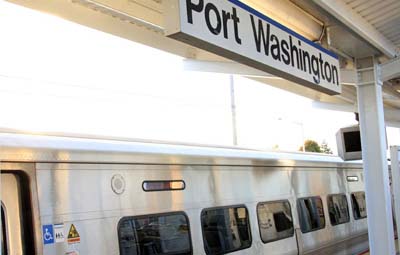The Long Island Rail Road hit a monthly on-time rating of 94.6 percent in March, according to statistics from the agency released Monday, exceeding the agency’s monthly on-time goal.
In addition to exceeding the agency’s goal of a monthly 94 percent on-time performance, March 2019’s rating was 6.5 percentage points higher than last March. In March 2018, only 88.1 percent of trains were considered on time, as compared to 90.9 percent in 2017 and 95.2 percent in 2016.
This puts the agency’s overall on time rating for the year so far at 93.2 percent. This follows 92.7 percent of January trains being on time 92.1 percent of February trains arriving on time.
On the Oyster Bay line, which features stops in Greenvale, Roslyn, Albertson and East Williston, the monthly on-time rating was 96.1 percent – an improvement of more than 10 percentage points from March 2018.
Meanwhile on the Port Washington line, which stops in Port Washington, Plandome, Manhasset, and Great Neck, the monthly on-time performance rose from 88 percent in March 2018 to 95.6 percent for March 2019. This is a difference of more than 7 percentage points.
The LIRR considers a train on time if it arrives at their destination less than six minutes after its scheduled arrival time.
In an interview with Blank Slate Media, MTA Chairman and CEO Patrick Foye attributed the accomplishment to the “excellent work of” LIRR president Phillip Eng, who recently marked his one-year anniversary with the agency.
Speaking at a Monday committee meeting, Eng attributed the improvement to initiatives and a new way of thinking under the LIRR Forward Plan. Among its components are switch upgrades, hardening infrastructure, and increasing the frequency of maintenance.
The improvement comes as the LIRR faces an increase in ridership. According to Eng, around 7.5 million people rode the railroad in March, a 270,000-person increase from the same time last year.
“We are moving more and more people every day as we tackle, one by one, the issues that have affected their travels in the past,” Eng said.
State Sen. Anna Kaplan (D-Great Neck) said the improved on-time ratings are good news, but that more still needs to be done to help LIRR riders.
“While I’m happy to hear that on-time performance is moving in the right direction, the LIRR has much more to do, as on-time performance alone doesn’t tell the full story about the challenges LIRR riders face every day,” State Sen. Anna Kaplan said in a statement. “Commuters are still dealing with constant headaches from unexpected cancellations, short trains, and dirty trains, and until they get the service they deserve, I will continue to exercise close oversight of the situation.”
It also comes as a nearly four percent fare hike approved by the Metropolitan Transportation Authority, which oversees the LIRR, is slated to go into effect on Sunday, April 21.
The MTA Board had voted on Feb. 27 to approve fare and toll increases so the agency has revenue to support operations and “meet rising costs and achieve a balanced budget as required by law,” according to the MTA’s website.



